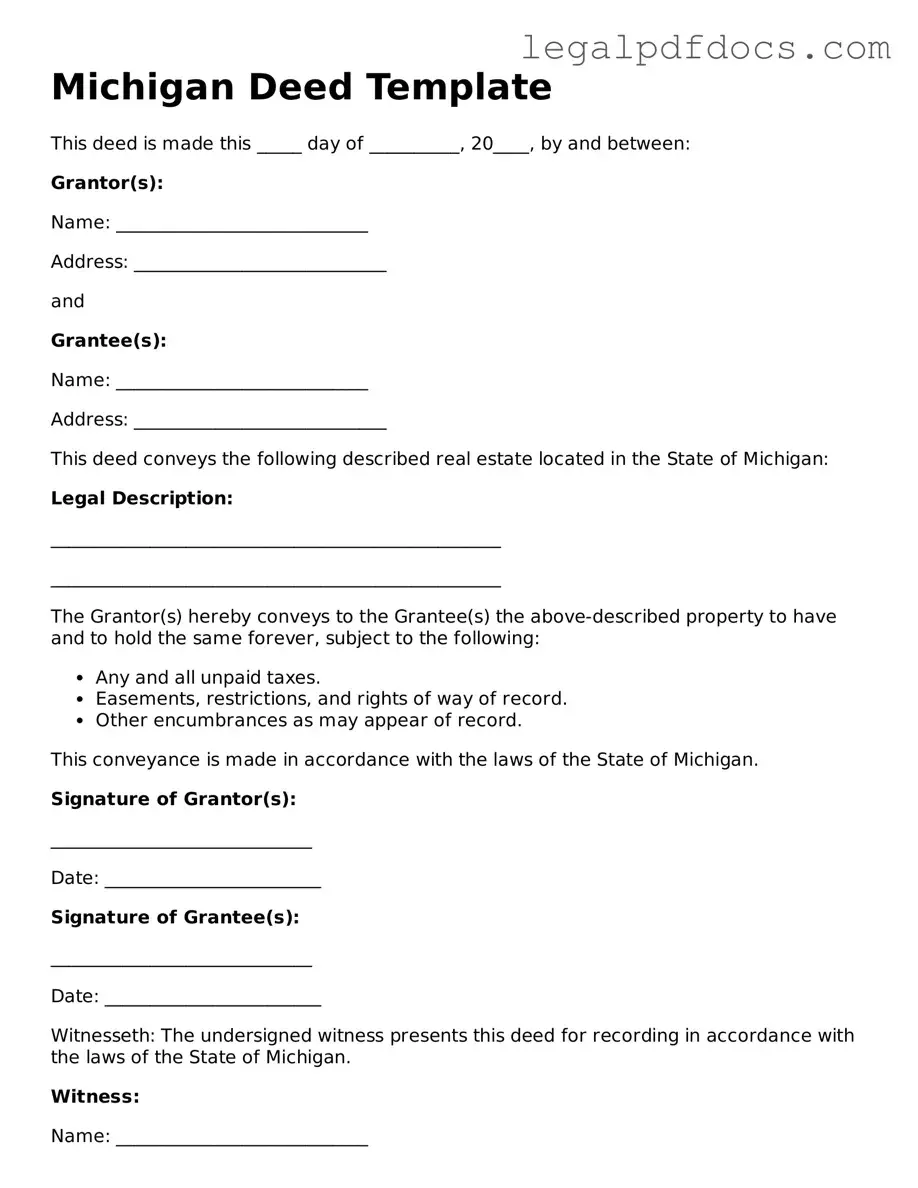When it comes to transferring property ownership in Michigan, understanding the Michigan Deed form is essential. This legal document serves as a formal record of the transfer of real estate from one party to another, ensuring that the transaction is recognized by the state. The form includes vital information such as the names of the grantor (the person transferring the property) and the grantee (the person receiving the property), as well as a detailed description of the property itself. Additionally, the deed must be signed and notarized to be valid, providing an extra layer of security for both parties involved. Different types of deeds, such as warranty deeds and quitclaim deeds, cater to various needs and circumstances, making it important for property owners to choose the right one for their situation. Understanding these aspects can help ensure a smooth and legally sound property transfer process, allowing individuals to navigate the complexities of real estate transactions with confidence.
